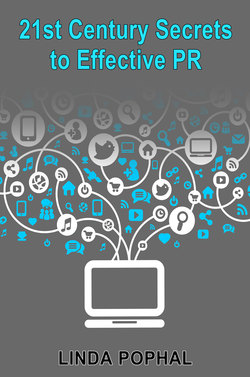Читать книгу 21st Century Secrets to Effective PR - Linda Pophal - Страница 6
На сайте Литреса книга снята с продажи.
The Power of Word-of-Mouth
ОглавлениеWhen it comes to making an impact on consumer buying decisions, word-of-mouth (WOM) matters. The Word of Mouth Marketing Association (WOMMA) released a study in 2014 that “found that the value of a word-of-mouth impression is anywhere from 5 to 100+ times more valuable than a paid media impression.”
From professional experience when working in the healthcare industry, I know our own consumer research indicated that more than 50 percent of the consumers in our market said word-of-mouth was the most significant influence on their choice of a provider.
From personal experience, I know that I, like many consumers, am certainly influenced by the opinions of others. In a tight economy, that's even more the case.
The significant impact of word-of-mouth can be good news to those organizations and individuals who have a great product, or service, that is readily available and meets customer needs; generating positive word-of-mouth is virtually “free marketing.”
Word-of-mouth can be bad news for others, of course. Given the influence others have on our buying behaviors, it would seem to behoove marketers to make sure they're spending time and effort:
•#1 - creating and delivering a good product/service.
•#2 - "wooing" the customers they have.
What's even worse than not doing No. 1 and No. 2 is doing what many business owners do — spending a lot of time and money promoting products and services that are not good and that customers do not value. They’re creating word-of-mouth all right, but not the kind of word-of-mouth they had in mind.
Questions to ask yourself (and your customers):
•Does my product/service provide value?
•Is my product/service highly rated compared with other available alternatives?
•If not, what can/should I be doing to improve quality and perception?
•If yes, what can/should I be doing to encourage and increase WOM?
•If not, should I be spending any more time/money promoting my product/service when the outcome might actually mean I'm spending money to generate more negative word-of-mouth?
There are two key factors at play here:
•First, word-of-mouth, as demonstrated through the WOMMA study and others, definitely has an impact on consumer perceptions and, ultimately, sales.
•In today’s digital communication environment, the ability for word-of-mouth to reach audiences is heightened significantly, consequently, having the potential for greater positive, or negative, impact.
It used to be that word-of-mouth was managed primarily through providing great service. While companies might have received negative feedback from consumers, that feedback was not likely to reach far beyond their four walls — unless the media picked up on a story. Today, of course, the media picking up on a story is not an organization’s main concern. Today, organizations are equally, if not more, concerned about what the general public is saying about them through online channels where digital messages have the power to reach millions in minutes.
